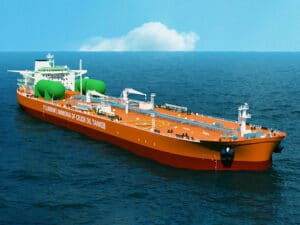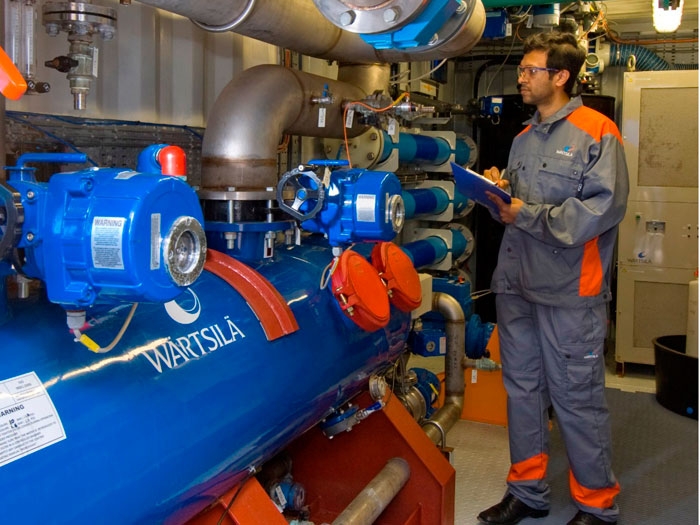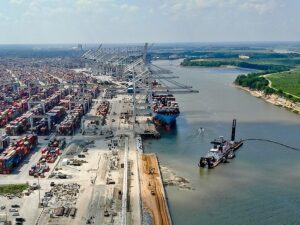
Another Wärtsilä BWMS gets AMS approval
Written by Nick Blenkey
Wärtsilä Aquarius EC BWMS currently being tested for USCG type approval
NOVEMBER 12, 2014 — The U.S. Coast Guard (USCG) has granted Alternate Management System (AMS) acceptance to Wärtsilä’s Aquarius EC Ballast Water Management System (BWMS). This allows all U.S. and foreign flag ships fitted with this system to operate in U.S, territorial waters and to discharge treated ballast water for an interim period of up to five years from the ship specific implementation date.
Wärtsilä’s Aquarius UV BWMS was earlier granted USCG AMS acceptance. Orders were recently received for 12 Aquarius UV systems to be installed in six new bulk carriers currently under construction in Japan. The AMS approval process for the Aquarius EC has taken longer than that of the UV system as it uses an active substance to treat the ballast water. The testing procedures are, therefore, more stringent.
AMS acceptance is the first stage towards obtaining full USCG type approval and Wärtsilä anticipates having all activities necessary to gain full U.S. type approval completed within the five year interim period.
When ratified, the International Maritime Organization’s (IMO) Ballast Water Management Convention will require the owners of up to 40,000 vessels worldwide to install a BWMS. However, U.S. law already requires that ships of all flags sailing in U.S. waters be fitted with a Coast Guard approved BWMS which must be installed in new ships constructed on or after December 1, 2013 and in existing ships by their first dry-docking after 2014 or 2016 depending on their BW capacity.
The Wärtsilä Aquarius EC BWMS uses a two-stage process involving filtration and electro-chlorination (EC). During uptake, seawater is first passed through a 40 micron backwashing screen filter to remove particulate, sediment, zooplankton and phytoplankton. Disinfection of the filtered sea water is then carried out using hypochlorite generated from the side stream EC process, and controlled by the BWMS control system. Upon discharge, the ballast water by-passes the filter and any residual active substance is neutralized using sodium bisulfite, to ensure that the ballast water is safe to discharge back to the sea in full compliance with MARPOL requirements.





Leave a Reply
You must be logged in to post a comment.